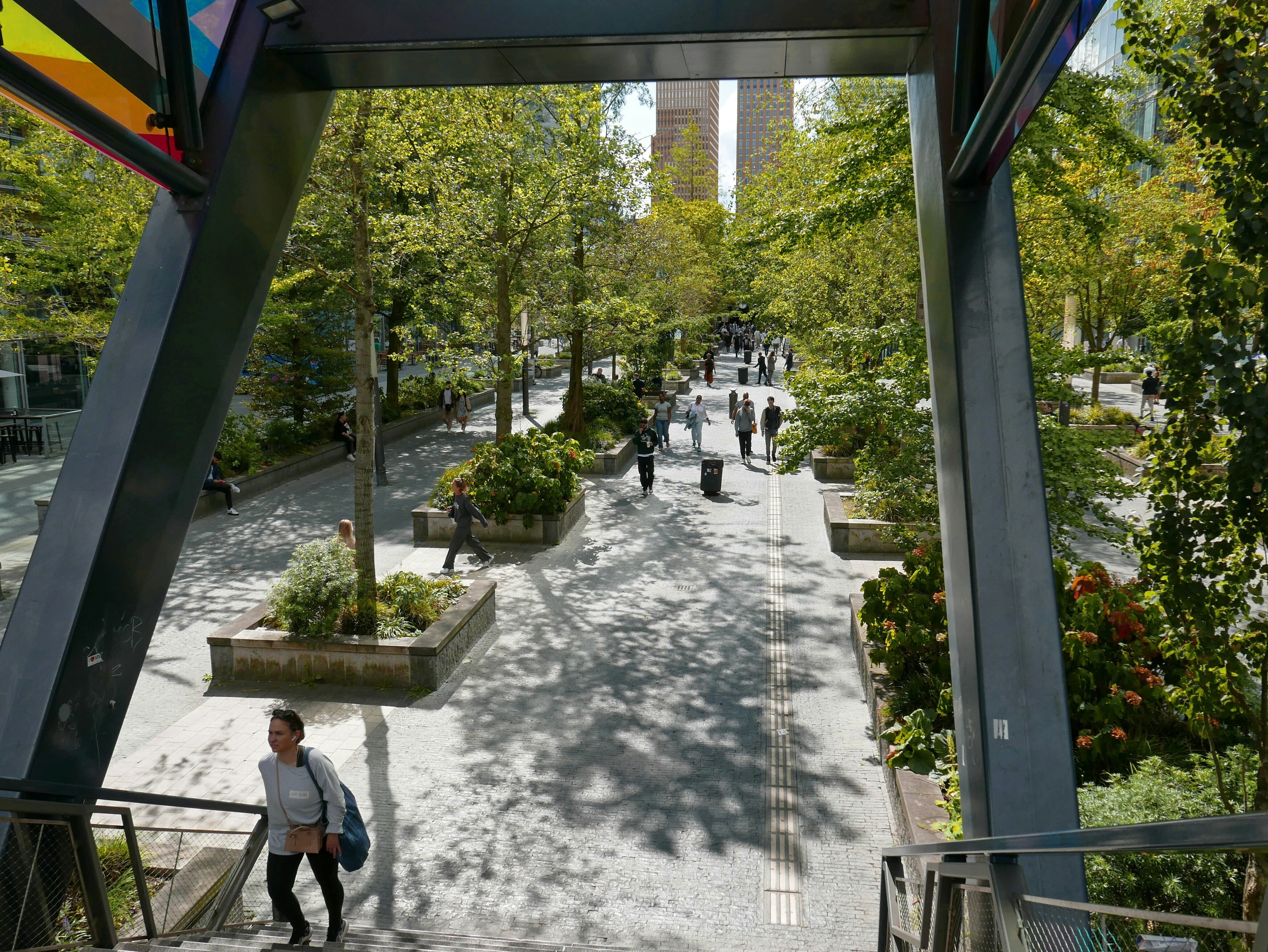This zero-energy device collects water from the air

The breakthrough could help tackle water scarcity in developing countries.
Image: REUTERS/Mike Hutchings
Stay up to date:
Science
- Researchers have developed a condenser for countries where water is in short supply.
- The new technology allows researchers to harvest water 24 hours around the clock, with no energy input, for the first time.
- It relies on a self-cooling surface and a special radiation shield.
- The device can harvest up to 0.53 deciliters of water per square meter of pane surface per hour.
- The breakthrough could help in countries with water scarcity.
Researchers have developed a condenser for countries where water is in short supply.
Theirs is the first zero-energy solution for harvesting water from the atmosphere throughout the 24-hour daily cycle. It relies on a self-cooling surface and a special radiation shield.
Fresh water is scarce in many parts of the world and getting it comes at great expense. Communities near the ocean can desalinate sea water for this purpose, but doing so requires a large amount of energy.
Further away from the coast, often the only remaining option is to condense atmospheric humidity through cooling, either through processes that similarly require high energy input or by using “passive” technologies that exploit the temperature swing between day and night.
With current passive technologies, such as dew-collecting foils, however, water can only be extracted at night. This is because the sun heats the foils during the day, which makes condensation impossible.
The new technology, for the first time, allows researchers to harvest water 24 hours around the clock, with no energy input, even under the blazing sun.
The new device essentially consists of a specially coated glass pane, which both reflects solar radiation and also radiates away its own heat through the atmosphere to the outer space. It thus cools itself down to as much as 15 degrees Celsius (59 degrees F) below the ambient temperature. On the underside of this pane, water vapor from the air condenses into water. The process is the same as can be observed on poorly insulated windows in winter.
The scientists coated the glass with specifically designed polymer and silver layers. This special coating approach causes the pane to emit infrared radiation at a specific wavelength window to the outer space, with no absorption by the atmosphere nor reflection back onto the pane.
Another key element of the device is a novel cone-shaped radiation shield. It largely deflects heat radiation from the atmosphere and shields the pane from incoming solar radiation, while allowing the device to radiate the aforementioned heat outward and thus self-cool, fully passively.
What is the Forum doing to address the global water challenge?
As tests of the new device under real-world conditions on the roof of a building in Zurich showed, the new technology can produce at least twice as much water per area per day as the best current passive technologies based on foils: the small pilot system with a pane diameter of 10 centimeters (about 3.94 inches) delivered 4.6 milliliters (0.155 ounces) of water per day under real-world conditions. Larger devices with larger panes would produce more water accordingly.
The scientists were able to show that, under ideal conditions, they could harvest up to 0.53 deciliters (1.79 ounces) of water per square meter of pane surface per hour.
“This is close to the theoretical maximum value of 0.6 deciliters per hour, which is physically impossible to exceed,” says Iwan Hächler, a doctoral student in the group of Dimos Poulikakos, professor of thermodynamics at ETH Zurich.
Other technologies usually require the condensed water to be wiped from a surface, which requires energy. Without this step, a significant portion of the condensed water would cling to the surface and remain unusable while hindering further condensation. The researchers applied a novel superhydrophobic (extremely water-repellent) coating to the underside of the pane in their water condenser. This causes the condensed water to bead up and run or jump off on its own accord.
“In contrast to other technologies, ours can really function without any additional energy, which is a key advantage,” Hächler says.
The researchers’ goal was to develop a technology for countries with water scarcity and, in particular, for developing and emerging countries. Now, they say, other scientists have the opportunity to further develop this technology or combine it with other methods, such as water desalination, to increase their yield.
The production of the coated panes is relatively simple and building water condensers that are larger than the current pilot system ought to be possible. Similar to the way solar cells feature several modules set up next to each other, several water condensers could also be positioned side by side to piece together a large-scale system.
The research appears in Science Advances.
Accept our marketing cookies to access this content.
These cookies are currently disabled in your browser.
Don't miss any update on this topic
Create a free account and access your personalized content collection with our latest publications and analyses.
License and Republishing
World Economic Forum articles may be republished in accordance with the Creative Commons Attribution-NonCommercial-NoDerivatives 4.0 International Public License, and in accordance with our Terms of Use.
The views expressed in this article are those of the author alone and not the World Economic Forum.
Related topics:
Forum Stories newsletter
Bringing you weekly curated insights and analysis on the global issues that matter.
More on Nature and BiodiversitySee all
Sarah Franklin and Lindsey Prowse
April 22, 2025
Jeff Merritt
April 22, 2025
Elizabeth Mills
April 17, 2025
Tom Crowfoot
April 17, 2025
Lindsey Ricker and Hanh Nguyen
April 16, 2025





